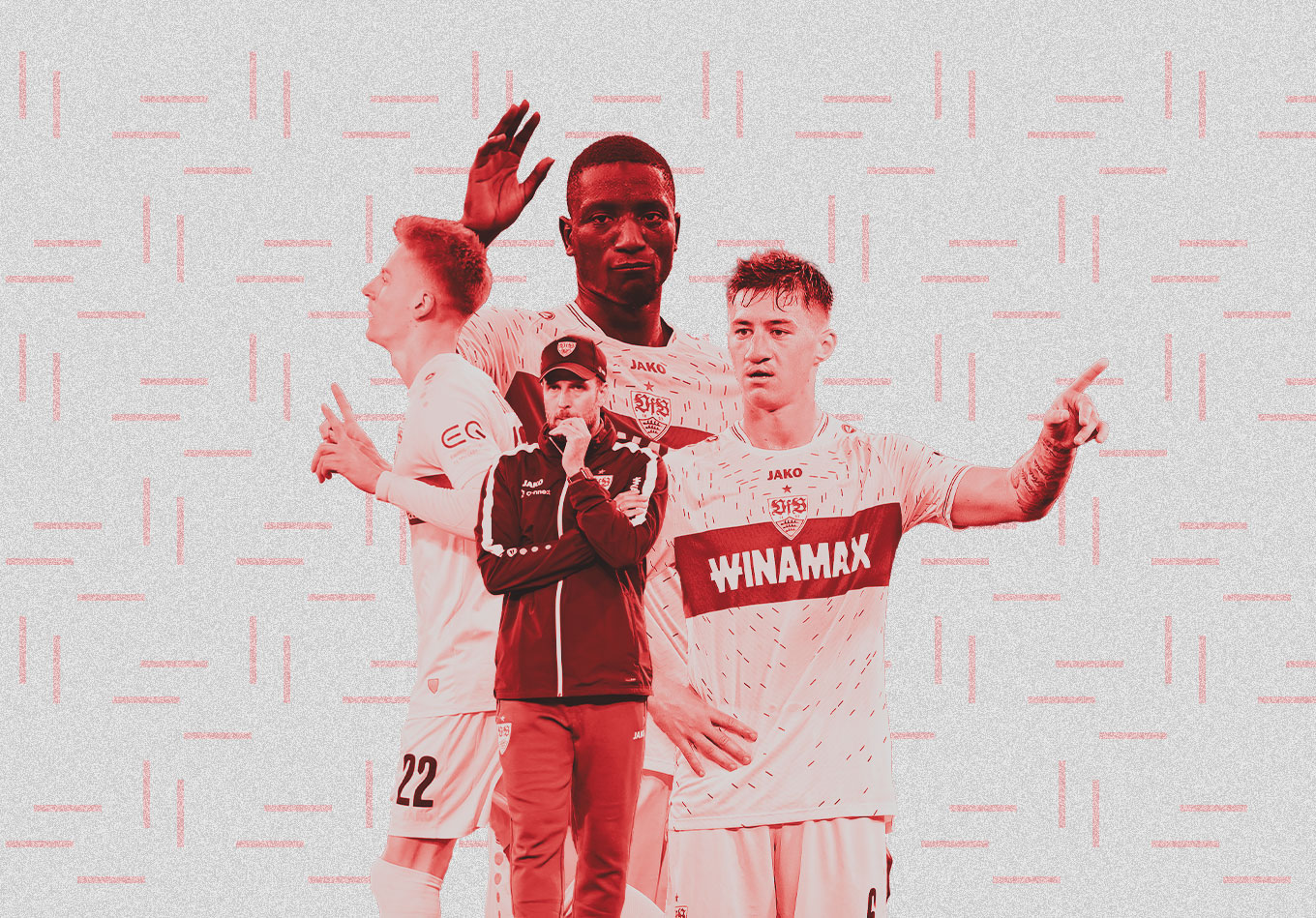Stuttgart are sitting pretty in second behind Xabi Alonso’s Bayer Leverkusen, but it wasn’t always like this.
A calamitous 2022-23 season saw Stuttgart go through four managers, the last of whom steered them to safety. It took a two-legged relegation play-off for Sebastian Hoeneß to keep them afloat but he and the club haven’t looked back since.
Six wins from seven in the Bundesliga this season and a point ahead of the usual suspects Bayern Munich and Borussia Dortmund, Stuttgart have been nothing short of spectacular. There’s also been plenty of praise for top-scorer Serhou Guirassy, and rightly so.
The Guinea striker has effectively established himself as Harry Kane’s main rival for the golden boot – or Kicker-Torjägerkanone – this season with 13 goals already; no one in Bundesliga history has enjoyed such a fruitful start to a campaign. Praise must also be attributed to the manager for making all of this happen, Hoeneß, whose interesting methods and offensive principles have brought a brand of richly entertaining football back to the city of Stuttgart.
How has he managed this?
Attacking With Purpose
Averaging three non-penalty goals per game, no other Bundesliga club rank higher than Stuttgart when it comes to putting the ball in the back of the net consistently. Hoeneß puts a big emphasis on playing an entertaining brand of football and sets his side up accordingly with a 3-3-4 shape in possession, requiring one of the full-backs to drop as the other pushes forward into midfield, pinning the opposition’s widest midfielder inside and creating 1v1s in wide areas.
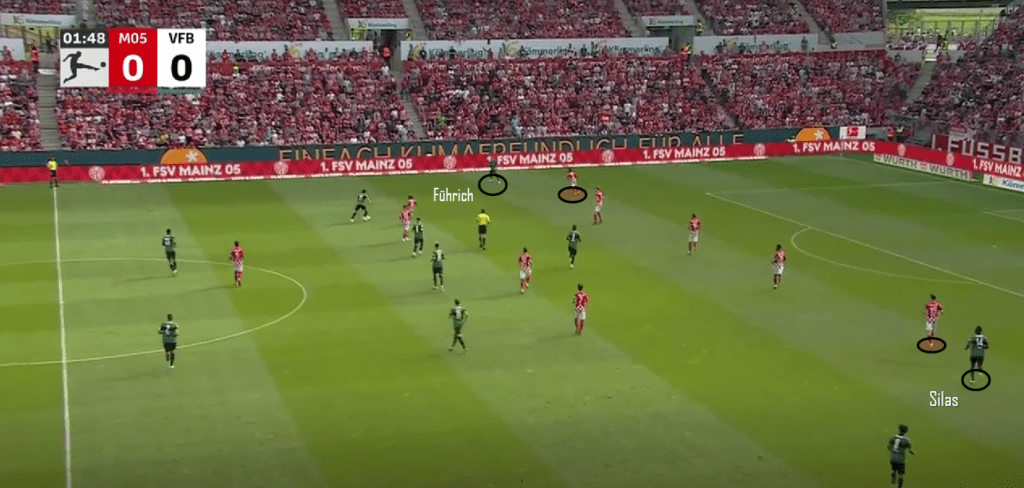
Recently capped Germany international Chris Führich and Silas are the two first-choice wingers. Both are very direct and can use their speed and 1v1 ability to create for the main man up front, Guirassy.
Whereas Führich likes to take on his marker and cut inside to cross or shoot, Silas lacks the end product of his teammate, though he is far more effective in transition. This does mean Stuttgart’s attack has flaws, but Führich and Guirassy have developed a great understanding.
And although it may seem Guirassy is just about the goals, the former Rennes striker does so much more.
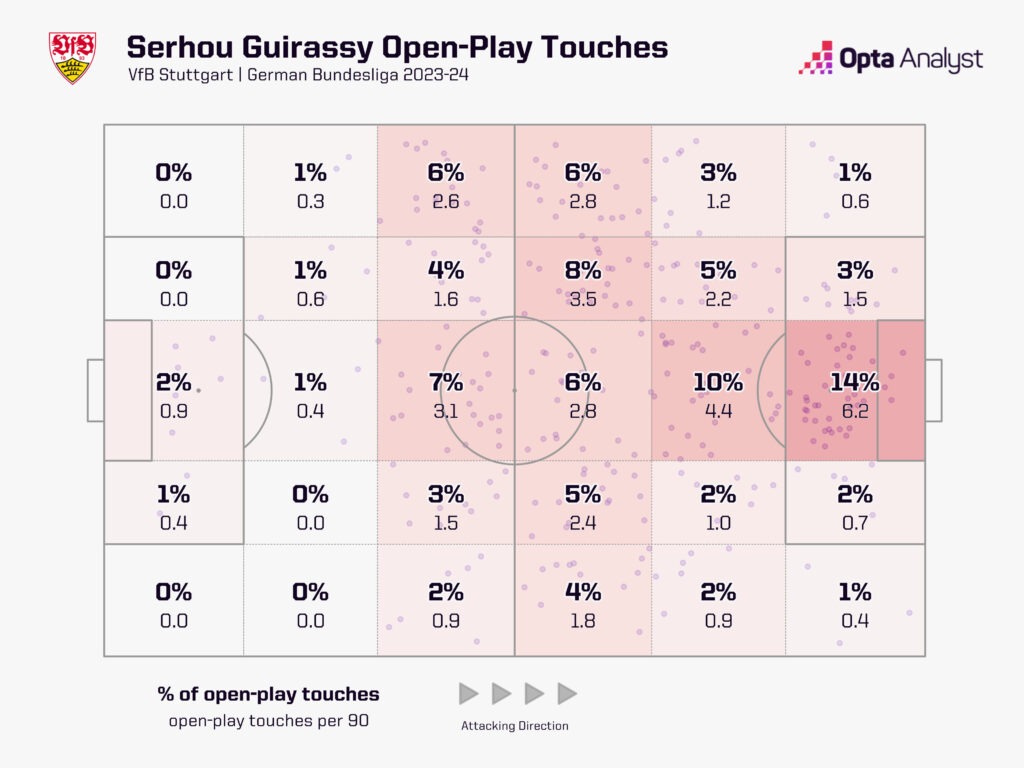
The 27-year-old is a manager’s dream number nine. He has the mobility, physical prowess and technique to run the channels, drop deep or link play. He’s also been devastatingly clinical, with his 41.9% shot conversion rate the best of any Bundesliga player to register more than eight attempts.
The 6-foot-1 tall striker is very difficult to knock off the ball, using his large frame and long limbs to trap and secure possession until passing options become available. This is something Stuttgart look to exploit when the midfield must be bypassed when building out from the back.
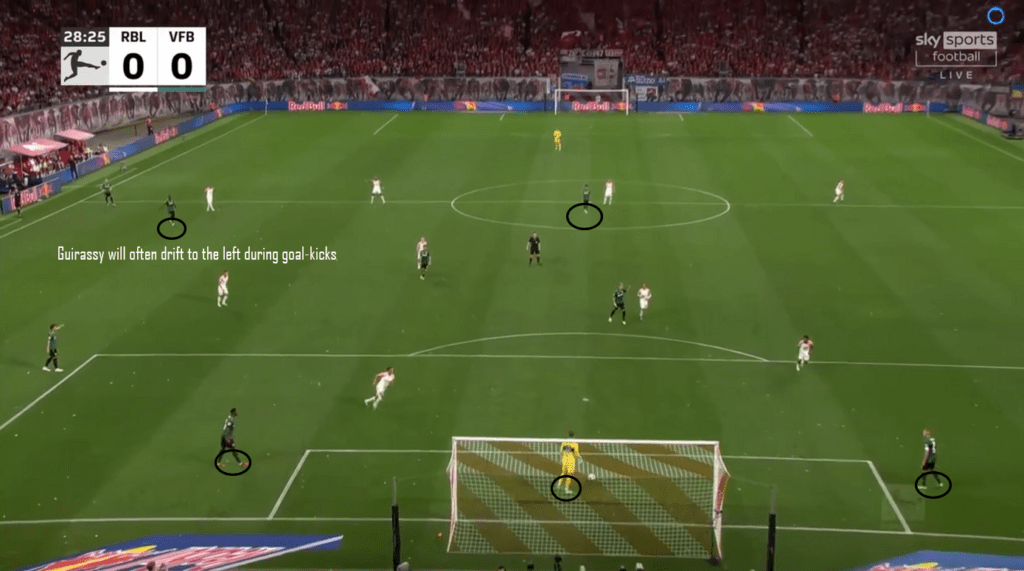
Once Guirassy has received the ball with his back to play, Stuttgart look to get runners beyond him with urgency, which is where the use of third-man combinations also come to the fore. In the below example against Freiburg, you can see Jeong Woo-yeong is looking to find Führich’s well-timed run after the lay-off from Guirassy, and this sequence eventually leads to their fourth goal.
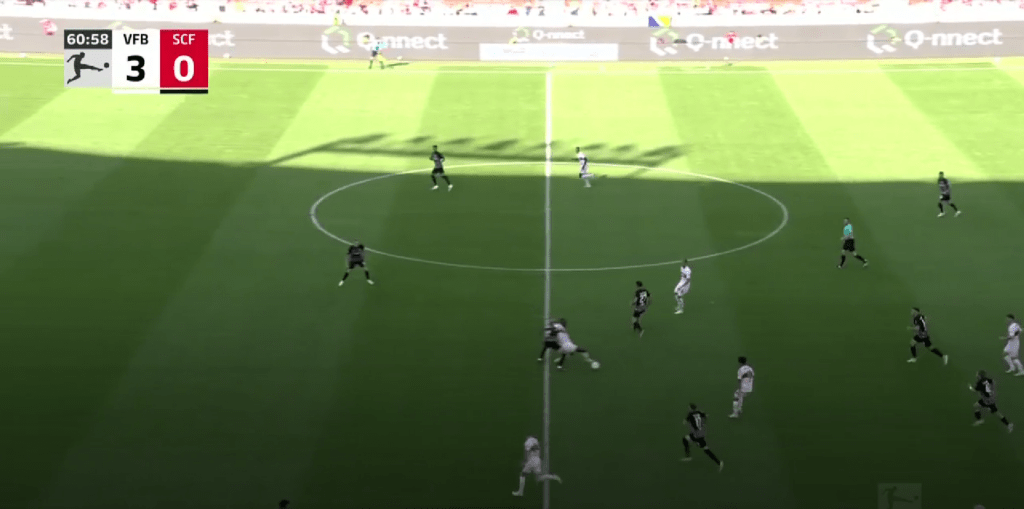
These combinations are not as prevalent on the right, however, and this left-sided bias is evident in other areas as well, but more on that later.
Passing in the Deep
Roberto de Zerbi’s Brighton have become renowned for focusing on building from deeper areas to free up the forwards to exploit spaces left behind. Something similar can be seen at Hoeneß’s Stuttgart.
Goalkeepers are inevitably a defining part of this build-up method, and Stuttgart have someone confident with his feet in Alexander Nübel.
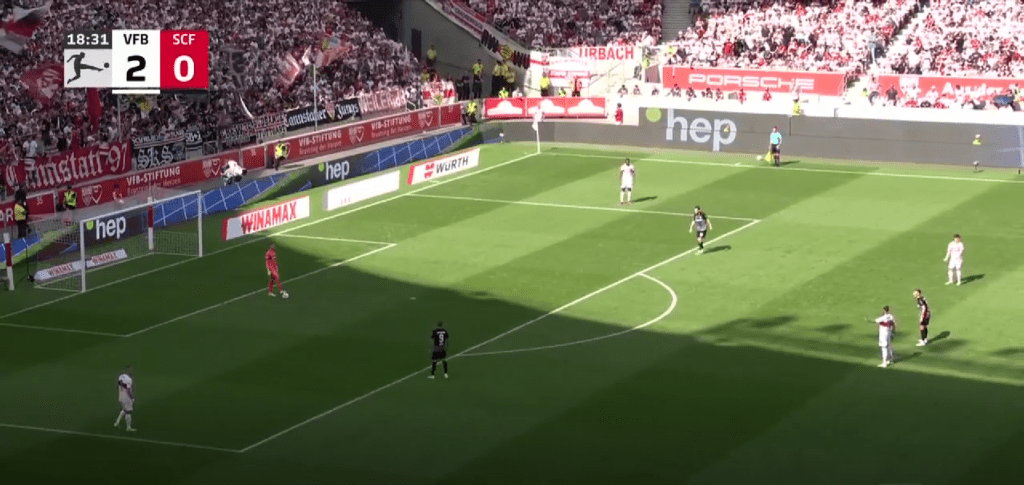
As seen in the above instance against Freiburg, Nübel is often playing the role of a centre-back when Stuttgart are in the first phase of their build-up, keeping possession to bait the opposition’s press.
In doing so, he’s naturally taking a risk. However, his comfort in receiving and releasing passes with the perfect weight means Stuttgart get a great deal of upside from him. The 27-year-old is a huge upgrade on Florian Müller and Fabian Bredlow, the two goalkeepers who shared responsibility last season. Nübel’s passing variety ensures Stuttgart can play out of pressure in many ways.
Ahead of Nübel are two very capable centre-backs in club captain Waldemar Anton and Dan-Axel Zagadou, the latter becoming first choice since Konstantinos Mavropanos joined West Ham United.
Having had experience playing in a back three previously, Anton and Zagadou are comfortable defending wide areas just as well as they are covering centrally. Perhaps more importantly, they are also secure passers and carriers of the ball.
That carrying aspect is crucial. It’s more important than ever for defenders to be able to carry the ball forward and beat the opposition’s press in doing so. In fact, both Anton (11.3) and Zagadou (8.2) rank in the top 20 of all defenders for progressive carries per 90 minutes this season.
Midfield Key To Control
Situationally, you will see Angelo Stiller drop from the double pivot and assist Nübel in bringing the ball out, using his exceptional press-resistant passing and carrying to help Stuttgart play out.
Hoeneß has worked with Stiller at multiple clubs in his career – firstly at Bayern II, then bringing him to Hoffenheim and now signing him at Stuttgart. It isn’t difficult to see why; he’s an exceptional receiver between the lines and is busy in and out of possession.
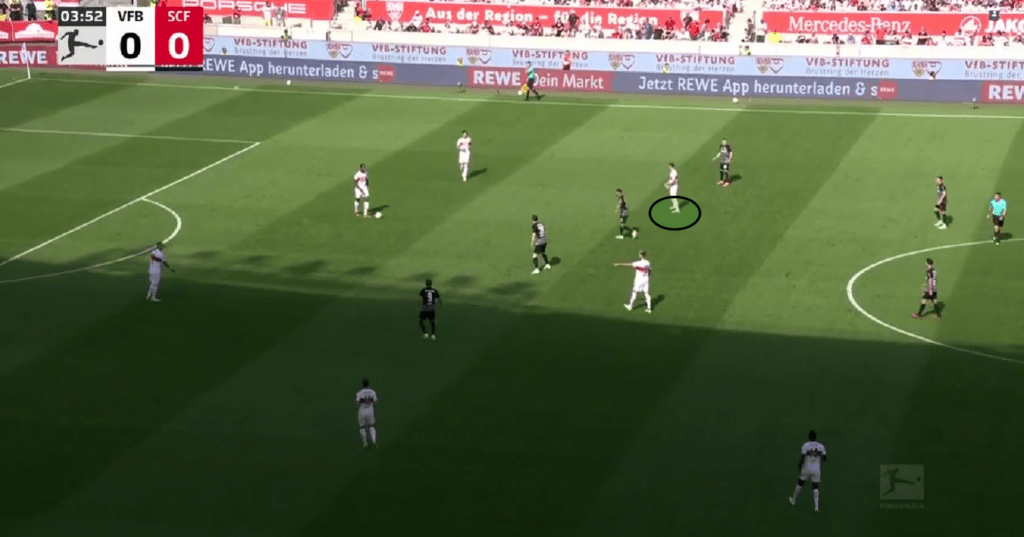
In the above example, Stiller receives the ball between five or six Freiburg players and then proceeds to carry horizontally to find right-back Pascal Stenzel, who then has space to carry and link with forward players.
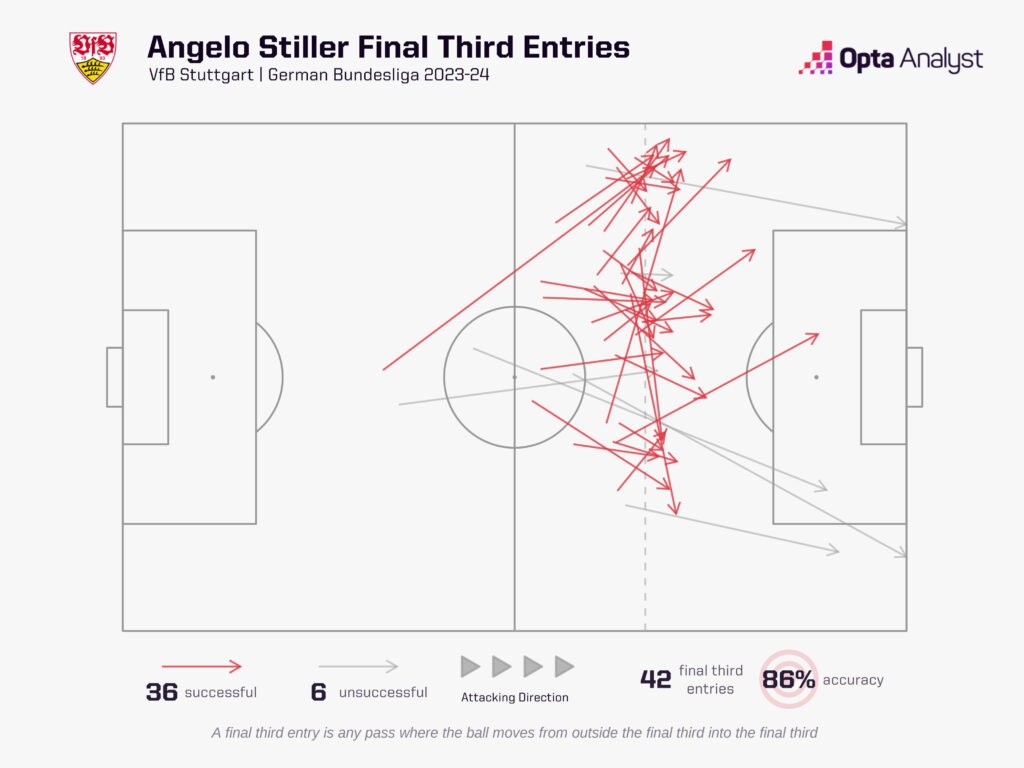
Once again, carrying the ball forward is key. Hoeneß’s philosophy of entertaining football combined with the right players to execute his vision – like Stiller – is one of the reasons behind Stuttgart’s transformation from a side that preferred to cede possession and go direct, to one that aim to retain it.
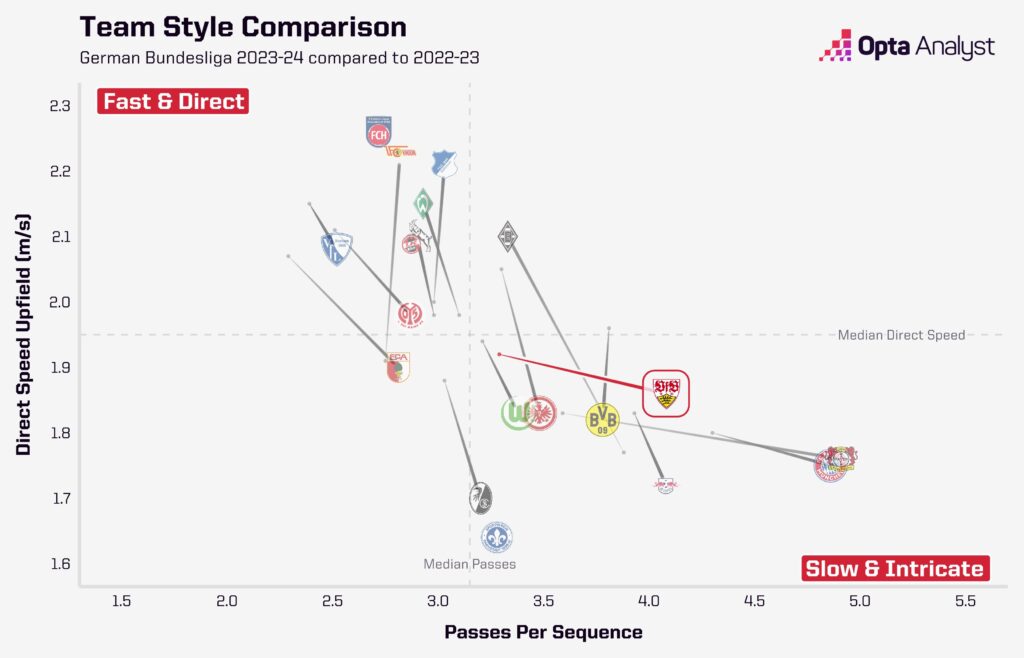
The numbers speak for themselves. With 4.08 passes per sequence, Stuttgart are third (level with RB Leipzig) behind only Bayern and Bayer Leverkusen. This control has not come at the cost of their directness, however. With a direct speed of 1.86 m/s, they are still much quicker at exploiting opposition spaces than their possession-keeping counterparts.
The Full-Backs
Losing Borna Sosa may have also been a factor in Stuttgart’s stylistic changes. The Croatian was more of a wing-back with purely offensive responsibilities in last season’s 3-4-3 system, whereas Hiroki Ito and Stenzel have been the starting full-backs this term.
We’ve touched on Stenzel’s role in possession being to join the midfield line, but in Ito, Hoeneß has a player with a great engine and the intelligence to execute multiple roles within a single game. In build-up, he’s the outside centre-back in a back three, while in attacking transition, he offers excellent overlapping runs behind Führich to deliver crosses for Guirassy.
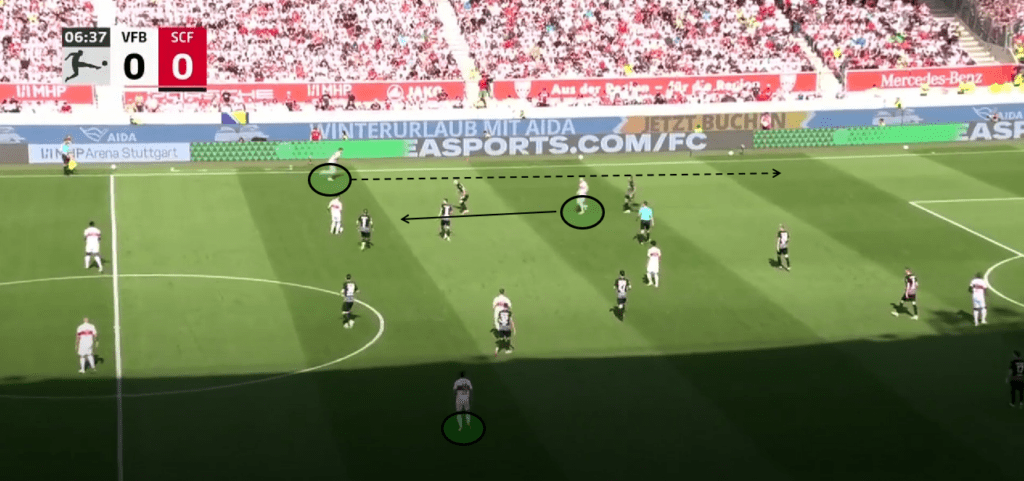
This dynamic is less prevalent on the right, although Stenzel has provided great deliveries when he does get forward. The 27-year-old former Germany Under-21 international is second among Stuttgart players for carries ending with a chance created (five) this season, three of which have been assists.
Guirassy’s Supporting Cast
Providing Guirassy with support are 21-year-old Frenchman Enzo Millot and, of course, the exciting Führich.
Millot’s importance is more than purely attacking, and the typical number 10 in Hoeneß’s system must offer a lot. At any given time, Millot can be found helping create an overload in wide areas or closing down centre-backs. In fact, his importance for Hoeneß is arguably more evident out of possession.
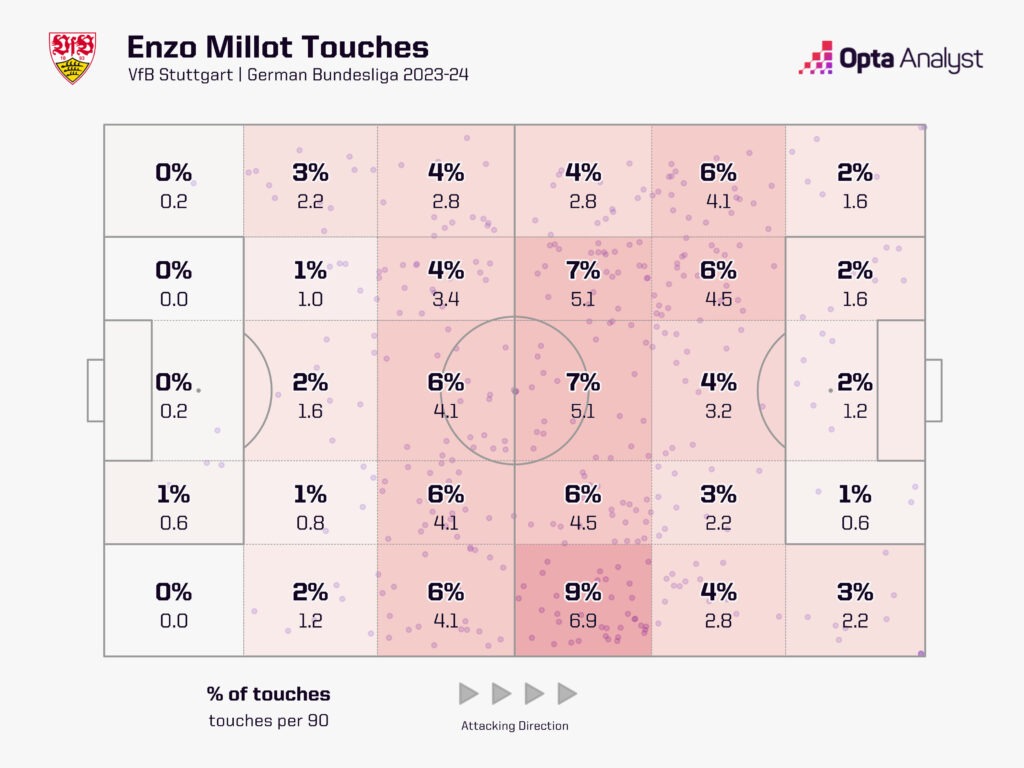
As Millot’s touch map shows, he’s all over the place, but in a good way. Whereas Führich is at his best when carrying the ball directly towards goal, attempting to beat defenders in 1v1 situations. He already has four assists – and a goal – following a carry. At this rate, he could feasibly end up in double digits.
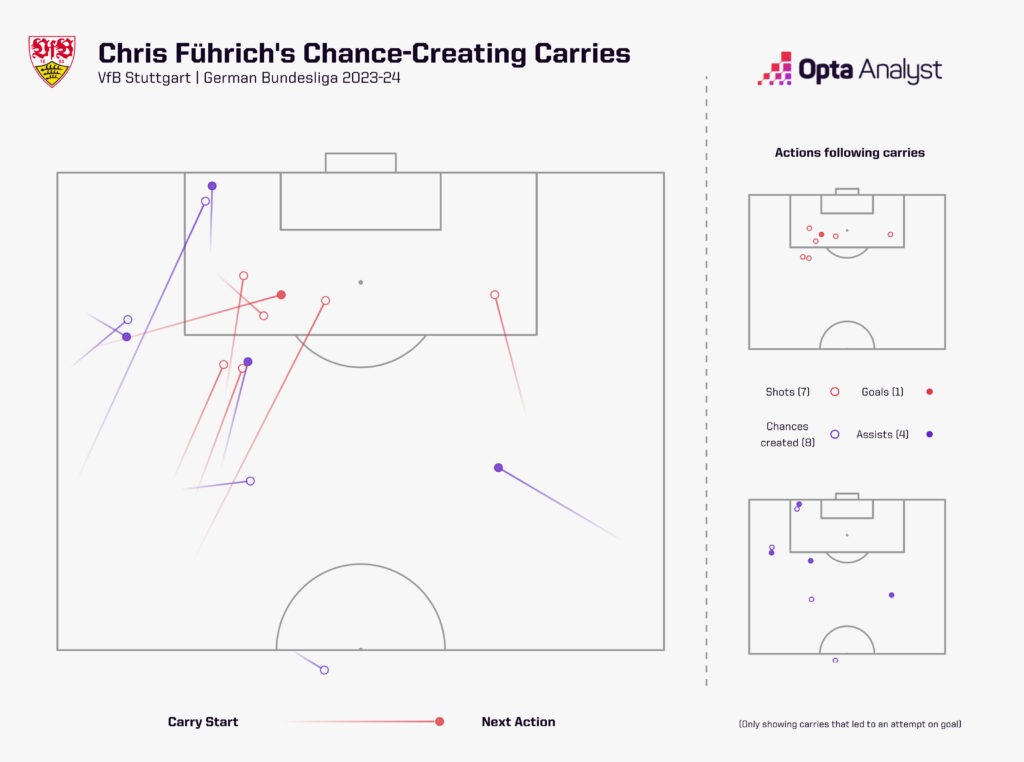
A big part of Führich’s role is to provide service to Guirassy’s feet or head, after which it is the striker’s responsibility to convert chances; there’s been no complaints in that regard this season. On the right, Silas isn’t of the same standard creatively, his 0.94 open-play chances created per 90 being well below Führich’s 1.83.
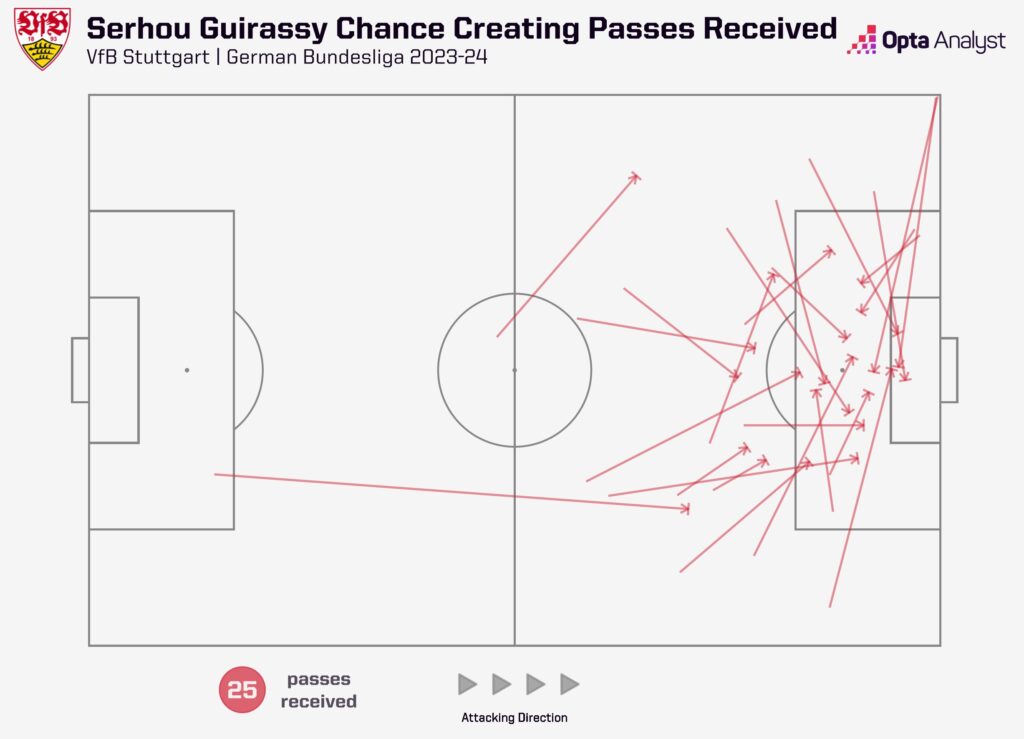
Guirassy is constantly on the move across the pitch, making him difficult to mark out of the game. However, given all that time spent outside the box, it’s impressive just how many chances he connects with inside the area.
Everything flows through Guirassy in attack, and when compared with players across the top five leagues, Guirassy’s involvement in possession sequences is a standout quality.
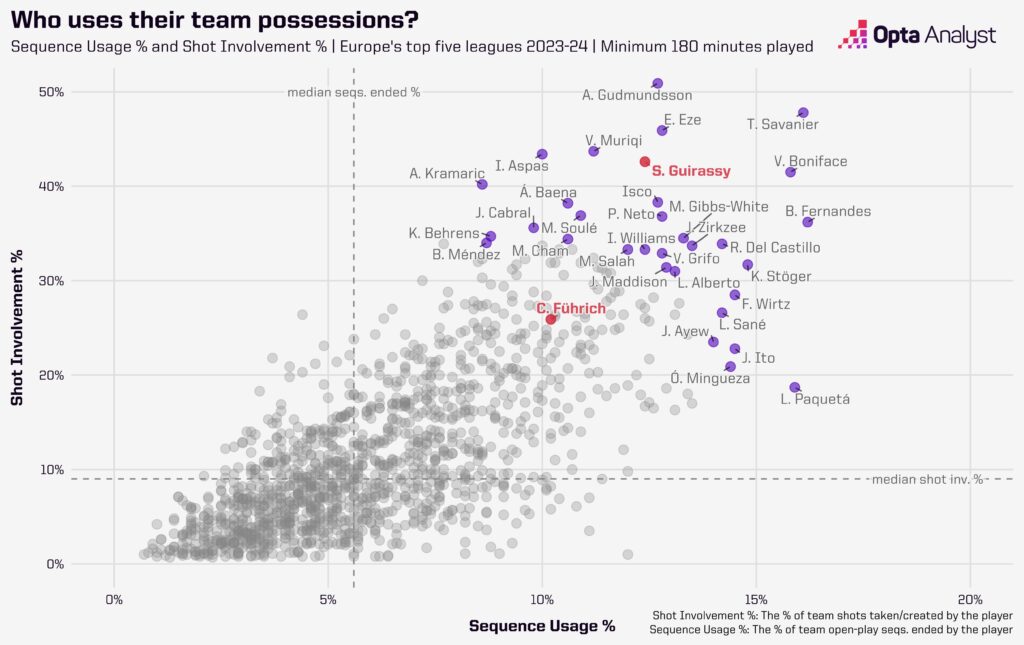
Beyond the Attack
Much of this piece looks at Stuttgart’s attack, which is where the more exciting stuff happens in Hoeneß’s system. However, what’s interesting in their defending is the lack of intense pressing that we’ve come to associate with top-end Bundesliga teams.
When defending in their own half, Stuttgart will retreat into a back five, with the ball-side winger dropping into the backline and the far-side winger pushing up to join Guirassy.
This approach ensures Stuttgart aren’t outnumbered in attack while retaining considerable threat in transition. A PPDA (passes per defensive action) figure of 14.4 (the 10th lowest in the Bundesliga) underlines how they don’t press that aggressively, generally choosing to retain their structure in something of a passive mid-block.
With all the attacking dynamics we’ve touched on, it’s clear Stuttgart have a left-side bias, but that ultimately works to their advantage even against the ball. Their high turnovers are a clear example of this.
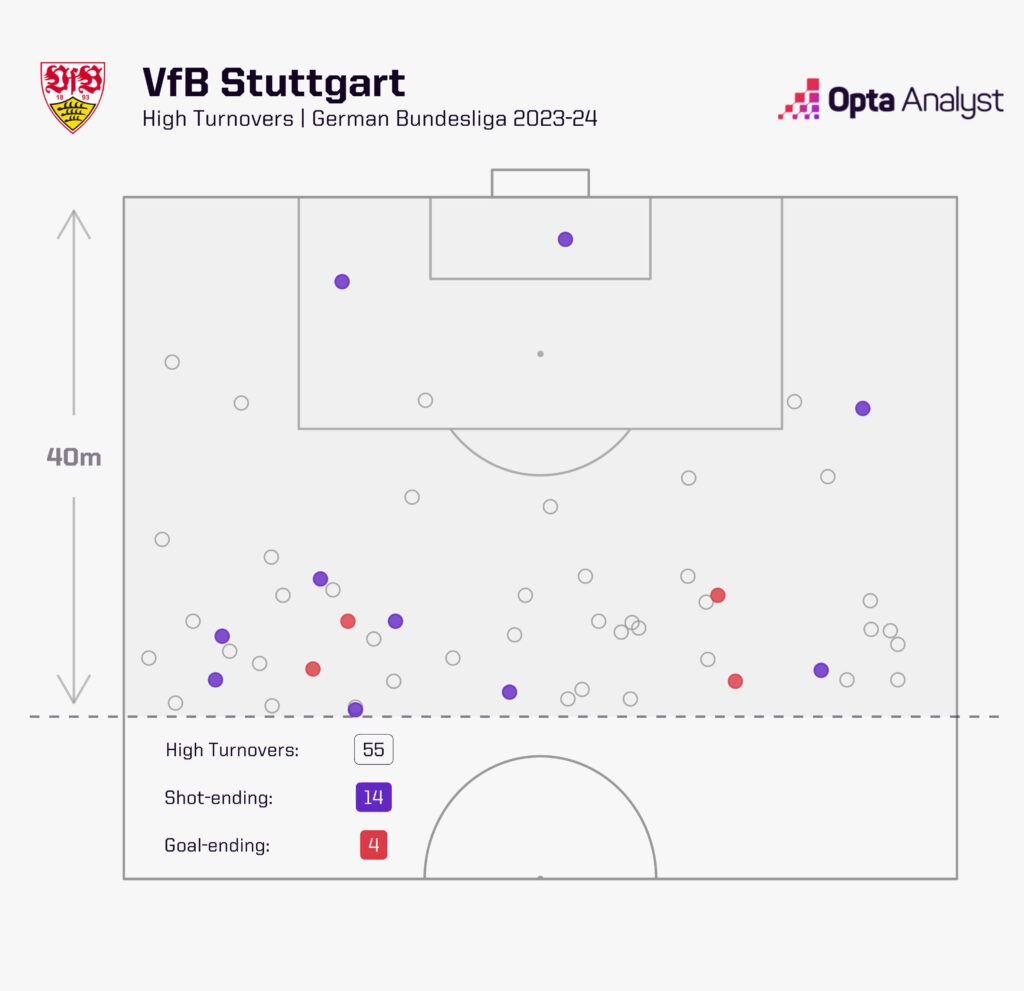
Though they’re seventh for high turnovers (55) this season, Stuttgart lead the league for shot-ending high turnovers (14), four of which have resulted in a goal – which is double the output of any other Bundesliga team. When Hoeneß’s side press high, they’re effective at making it count.
An Unknown Ceiling?
It’s worth mentioning Stuttgart have had an easier run of games to start the season, with their only loss being a 5-1 defeat against RB Leipzig. But even during that game they impressed in some respects.
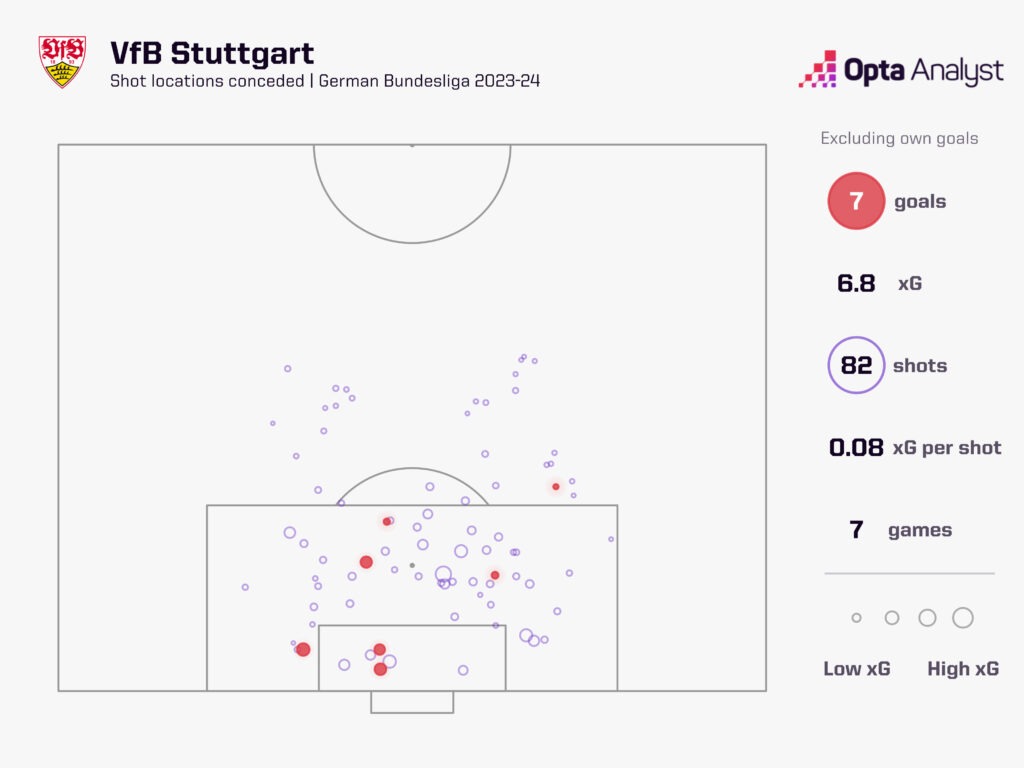
The chances they’ve conceded this season have generally been low quality, underlining their own defensive organisation. The caveat of weaker opposition will be tested after the international break, and Hoeneß’s tactical nous will be put under the microscope.
If they can continue this trend of steamrolling lesser teams and going toe-to-toe with those of a similar level to themselves, there’s no reason why Stuttgart’s season can’t have the dream finish the fans desire so greatly.
In a league where tactical variety has historically been at a minimum, Hoeneß’s Stuttgart are a breath of fresh air.
Enjoy this? Subscribe to our new football newsletter to receive exclusive weekly content. You should also follow our social accounts over on X, Instagram, TikTok and Facebook.
